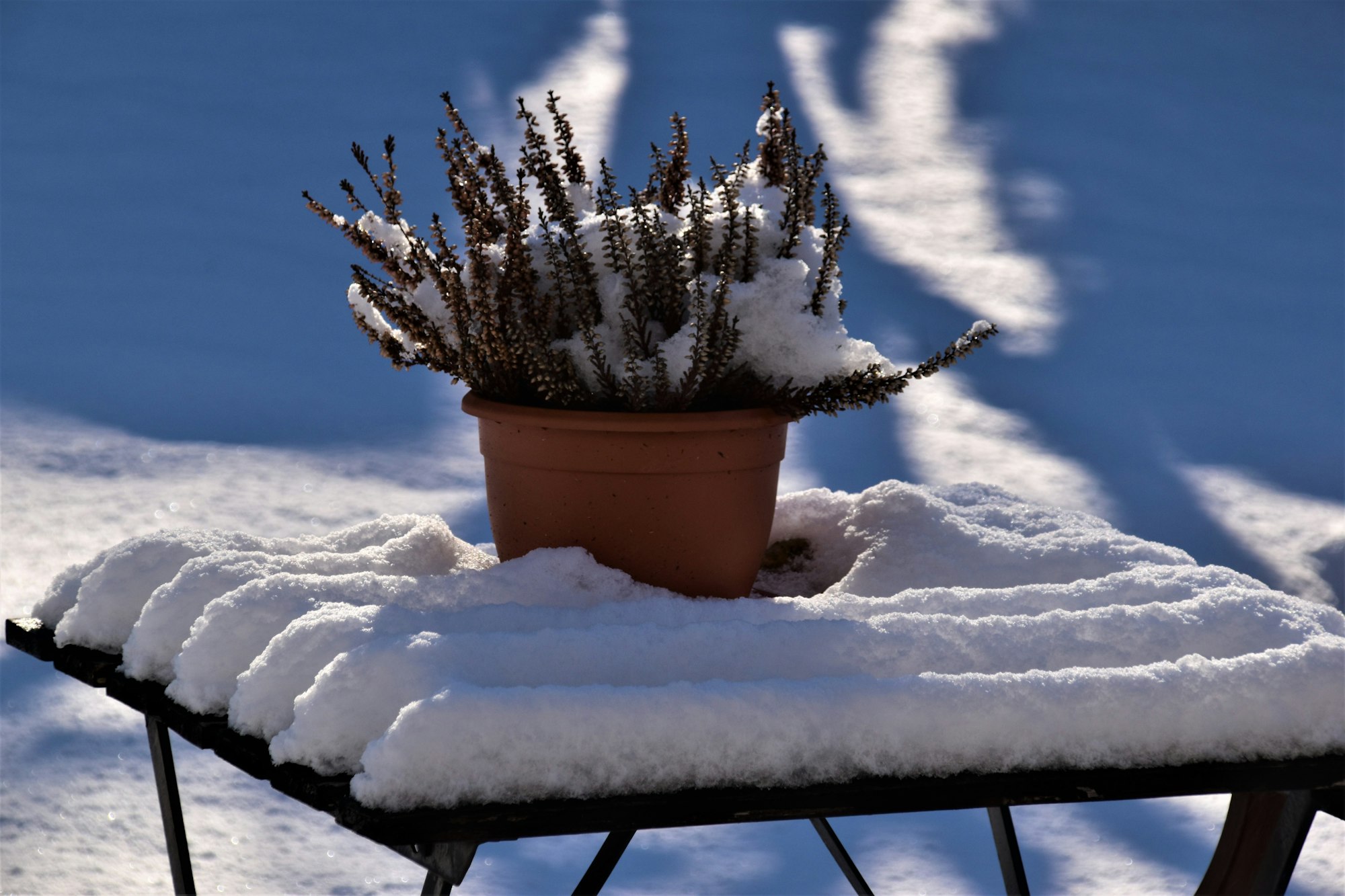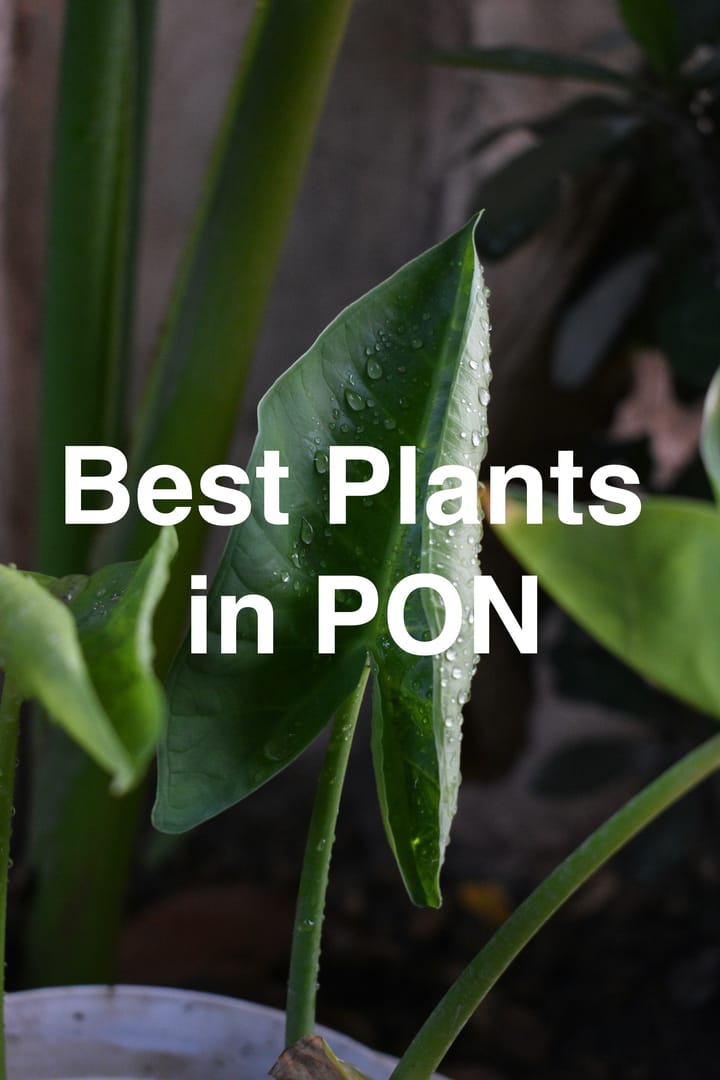Overwintering Plants
Embark on a journey through our detailed guide on overwintering plants, an essential aspect of winter plant care. Discover how to protect your cherished garden from frost, sustain proper light and humidity levels, and ensure a vibrant garden when spring arrives.

Overwintering isn’t just about survival; it's about providing your plants the care they need to flourish post-winter.
Plants, such as geraniums, tarragon, hibiscus, and rosemary, can benefit from overwintering techniques.
With proper care and attention, you can ensure your plants stay healthy and strong throughout winter.
Understanding Overwintering
Overwintering is more than just a survival strategy; it's about actively protecting plants in winter from harsh conditions like frost and heavy winds.
This process helps plants endure dormancy, a natural state where growth slows, and leaves may fall, especially due to temperature fluctuations, and avoid issues like shallow-rooted plants being forced out of the ground by these fluctuations.
Learn how to effectively overwinter your plants, preventing shallow-rooted varieties from being upheaved by these changes.
This ensures their survival and keeps them alive until the warmer months return.

Types of Overwintering Plants
Annuals and Perennials
When overwintering, it is essential to understand the difference between annuals and perennials.
Annuals complete their life cycle in one growing season, while perennials live for several years and return every season.
Annuals such as marigolds and petunias require one last feed before the cold sets in. Use a balanced fertilizer to encourage them to store more energy.
For perennials, cut back the dead foliage and mulch around the base to protect the root system.
Common Overwintering Houseplants
In the realm of overwintering, understanding the nuances of different plant types is key.
For instance, delicate ferns and vibrant azaleas each require unique approaches.
Some popular houseplants you can overwinter include geraniums, begonias, coleus, hibiscus, impatiens, and Boston ferns.
For geraniums, place them in a bright, cool spot and water them sparingly.
Boston ferns prefer higher humidity, so consider setting their pots over a tray of water-filled pebbles to increase moisture.
Succulents are also suitable for overwintering and often require less maintenance, while azaleas benefit from a protective layer of mulch.
Grasping these subtleties can make all the difference in preserving your garden's diversity through the winter.

Bulbs, Tubers, and Corms
Overwintering bulbs, tubers, and corms (such as dahlias, canna, tuberous begonia, calla, and ginger) require digging them up, allowing them to dry, and storing them in a cool, dark place until ready to replant in the spring.
Dahlias and cannas benefit from a curing phase post-digging, where they're left in a dry, ventilated space for a few days. Store them in peat moss or vermiculite to prevent drying out.

Trees and Shrubs
Young trees and shrubs can also be overwintered, especially in colder climates.
Wrapping young trees and shrubs with burlap protects them from the cold and winter sunscald.
Secure the burlap with twine, but ensure it's not too tight to damage the branches.
Tropical and Exotic Plants
Tropical and exotic plants, like bananas, cannas, elephant ears, caladiums, citrus, and figs, need special care for overwintering.
These plants should be brought inside and placed in a well-lit, warm area away from drafts and fluctuations in temperature.
Mimic tropical conditions for plants like citrus and bananas by keeping them in rooms with temperatures around 60-70°F (15-21°C) and providing plenty of light through south-facing windows or grow lights.

Preparing for Overwintering
Soil and Mulching
For soil preparation, add organic matter like compost to enhance drainage, particularly for plants like lavender susceptible to root rot.
Mulch with straw or shredded leaves to insulate without smothering the plants.
Watering Techniques
Reduce watering frequency to mimic the plant's natural habitat during dormancy.
Overwatering in winter can be detrimental, so allow the soil to dry out slightly between watering.
Pruning for Health
Pruning should be timed correctly; late fall pruning can stimulate new growth that will not survive the frost for many plants.
Instead, trim damaged or diseased branches to help the plant focus its energy on surviving the winter.
Overwintering Indoor
Indoor plant care during winter demands a shift in routine.
Houseplants like peace lilies or snake plants need less water and fertilizer as their growth slows.
Ensure they're away from cold drafts and have sufficient light – a scarce resource in winter.
This delicate balance of care is crucial in maintaining their health until spring's return.

Overwintering Process
The overwintering process is a meticulous one.
It involves repotting plants and ensuring they receive optimal light and humidity.
Place your plants near windows where they can bask in the winter sun, or use grow lights to supplement the shorter days.
Remember, a little extra attention now can lead to a lush, thriving garden come spring.
Potting and Repotting
Transfer them to appropriate containers filled with fresh potting mix when overwintering plants.
Avoid using garden soil, which can compact and negatively affect your plants' growth.
Controlling Humidity
Maintaining proper humidity levels ensures your plants thrive during cold winter. Be cautious not to overwater, as high humidity can lead to diseases.
Maintaining Proper Light
Provide adequate light by placing plants near windowsills with full sun exposure or using grow lights.
This compensates for shorter days and promotes healthy growth.
Dealing with Frost
Protect your plants from frost by covering them with insulating materials like burlap.
This helps preserve their health and improves their chances of surviving the winter.
Management of Dormancy Period
Triggers such as pruning aid with entering dormancy, a natural phase allowing plants to tolerate cold weather.
Ensure proper care during this period to promote vigorous growth when the warmer months return.

Post Overwintering Care
As winter wanes, it’s time to focus on post-overwintering care. This is a crucial period where gradual reintroduction to outdoor conditions is key.
Start by exposing your plants to increased sunlight and warmer temperatures, but do so gradually to avoid shock.
This careful transition is a vital gardening tip for winter, setting the stage for a blooming spring.
After the winter season, it's time to transition your overwintered plants back into their growing environment.
Slowly acclimate them to outdoor conditions by exposing them to sunlight and warmer temperatures.
Start by placing your plants in a sheltered location outdoors, away from direct sunlight and harsh winter winds, and then slowly increase their exposure over several days.
Once your plants are fully acclimated, assess their health and repair any damage that might have occurred during the overwintering process.
Prune any dead or damaged branches and foliage to encourage new growth.
Amend the soil of potted perennials with compost and apply a balanced fertilizer to provide essential nutrients for the growing season.

Be mindful of your plants' specific watering needs, ensuring they receive adequate water without overwatering.
Finally, ensure your plants are in the appropriate hardiness zone for their cold dormancy needs, ensuring their continued growth and success.
Pests and Diseases Management
When dealing with pests and diseases in your garden, creating a healthy environment for your plants during the overwintering process is essential.
Ensure your plants have adequate water before winter sets in, as dry soil conditions can lead to more damage from pests and diseases.
Keeping your garden clean is crucial in managing pests and diseases over winter.
Regularly remove and destroy fallen debris, such as leaves and old fruits, which can harbor pests like aphids, scale insects, and fungal pathogens.

Climate change also prompts the need for effective strategies in insect management.
Avoid using heavy wood chip mulches, which can prevent beneficial insects from nesting in your garden. Instead, opt for leaf mold or compost as mulch.
Rotating your crops and planting susceptible plants in different locations yearly can help minimize the re-emergence of pathogens in your overwintering plants.
By following these basic guidelines, you can effectively manage pests and diseases during the overwintering period and encourage a healthier, more productive garden come spring.
Frequently Asked Questions
What are the best methods to protect potted plants during winter?
To protect potted plants during winter, move them indoors before frost damages the foliage.
Place them in bright areas and add humidity using pebble trays or spray bottles. Be cautious not to overwater the plants.
Which vegetables are suitable for overwintering?
Vegetables such as kale, spinach, carrots, and parsnips can tolerate colder temperatures and are suitable for overwintering.
Apply a thick layer of mulch to protect the soil from freezing and maintain moisture.
How can I overwinter tropical plants without a greenhouse?
Transfer tropical plants indoors before the first frost. Provide them with adequate light, humidity, and warmth. Keep them away from heat ducts to prevent drying out.
What are the ideal conditions for overwintering geraniums?
Geraniums thrive in bright, indirect sunlight and moderate humidity.
Avoid placing them near heat ducts or drafts, and maintain a consistent temperature of 65 to 70°F (18 to 21°C).
When should I move my overwintered plants back outside?
Gradually acclimate your overwintered plants to the outdoors in the spring after the last frost.
Begin by placing them in a shaded location for a few days, gradually increasing their exposure to sunlight and outdoor conditions.
How can I prevent insects from infesting my plants during overwintering?
Before bringing plants indoors for the winter, inspect them for pests or diseases. Treat any infestations with appropriate insecticides or other remedies.
Regularly monitor your plants during the winter months for any signs of infestation.



